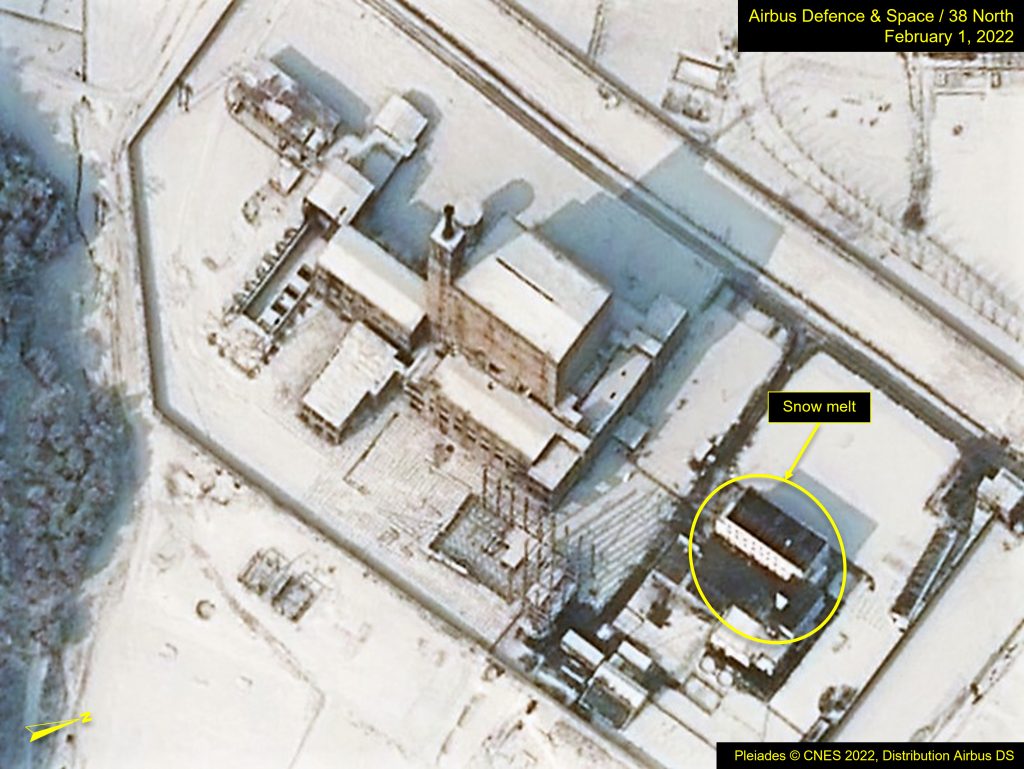Yongbyon Nuclear Center: Insights from a Snow-covered Day
Recent commercial satellite imagery of a snow-covered Yongbyon Nuclear Scientific Research Center provides a unique snapshot of the complex and its activities. An overnight snowfall, which blanketed the center and surrounding countryside, and the subsequent snow melt provide key insights into present ongoing operations at the various facilities at Yongbyon.
Snow melt helps indicate that the 5 MWe Plutonium Production Reactor and the Uranium Enrichment Plant (UEP) continue to operate, as reported in recent months, and that there is ongoing activity throughout the Yongbyon complex.
The Frenemy of Snow
While it’s not unusual to see snow at Yongbyon during the winter, this particular snowfall is unique, as imagery from the day before was snow-free, and by the day after, most of the snow had melted away. This suggests the ground and air temperature were above freezing, thus causing the rapid melting. Moreover, the fact that the snow melt observed had occurred before any wind or afternoon sun could contribute meaningfully to its melting helps increase confidence that areas of snow melt indicate activity within those buildings with a greater degree of certainty.
North Koreans are known to live and often work in rather Spartan-like conditions, where buildings are often unheated or minimally heated. Therefore, when the snow on one rooftop melts away, but snow remains on the roofs of adjacent buildings, the melt is most likely the result of warming within—often from equipment in operation or the necessary heating for materials that need to be maintained within certain temperature parameters.
Unfortunately, snow melt can be misleading at times as well. Extreme cold can delay melting, as can a well-insulated roof, which keeps heat from escaping into the rafters. Strong winds can blow snow off roofs, making wind speed and direction also important to snow removal patterns. Portions of roofs that get direct sunlight during the day will also tend to melt faster than those more protected surfaces and those that fall into shadow. These caveats add uncertainty to the assessments.
The Reactor Area
The 5 MWe Reactor and associated buildings in the surrounding area show the most melting activity around the Yongbyon complex. Snow melt is evident on the southern roof of the reactor building and several nearby support buildings, suggesting reactor operations continue. Additionally, warm water discharge—a key indicator of reactor operations—has been observed since late last year and continues to date, as evidenced by the darkened area at the discharge point and the ice-free portion of the river.
At the Experimental Light Water Reactor (ELWR), while there have been no clear indicators that the reactor has started operations, there is snow melt on the turbine building that may be related to equipment installation and testing. This section of the building is closest to the substation located on the east side of the ELWR.
Figure 1. Overview of Reactor Area with snow melt visible.
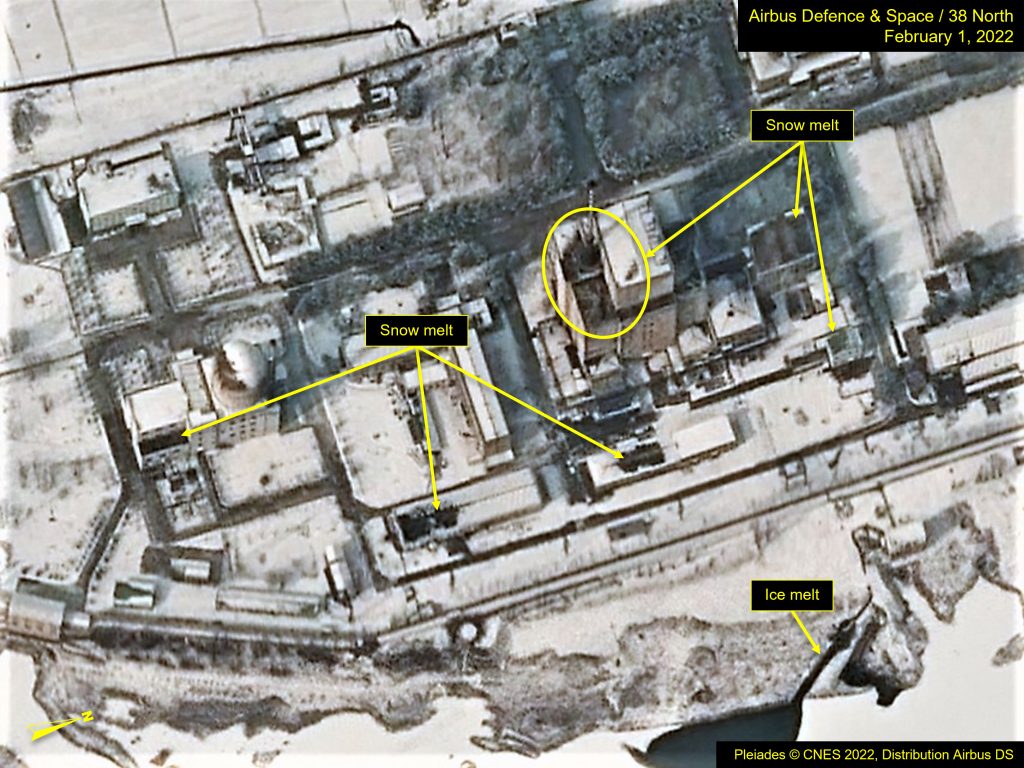
Uranium Enrichment Plant
At the UEP, there is no snow melt on the roofs of the centrifuge halls or new construction area. This does not mean the centrifuges are not spinning. The temperatures of the centrifuges, to accommodate this activity, are tightly controlled, making it unlikely to emit enough heat to cause snow to melt. Rather, there is snow melt on the buildings where the control room and stations for feeding and withdrawing UF6 are likely housed, suggesting enrichment activities are ongoing.
Figure 2. Overview of Uranium Enrichment Planet with snow melt visible.
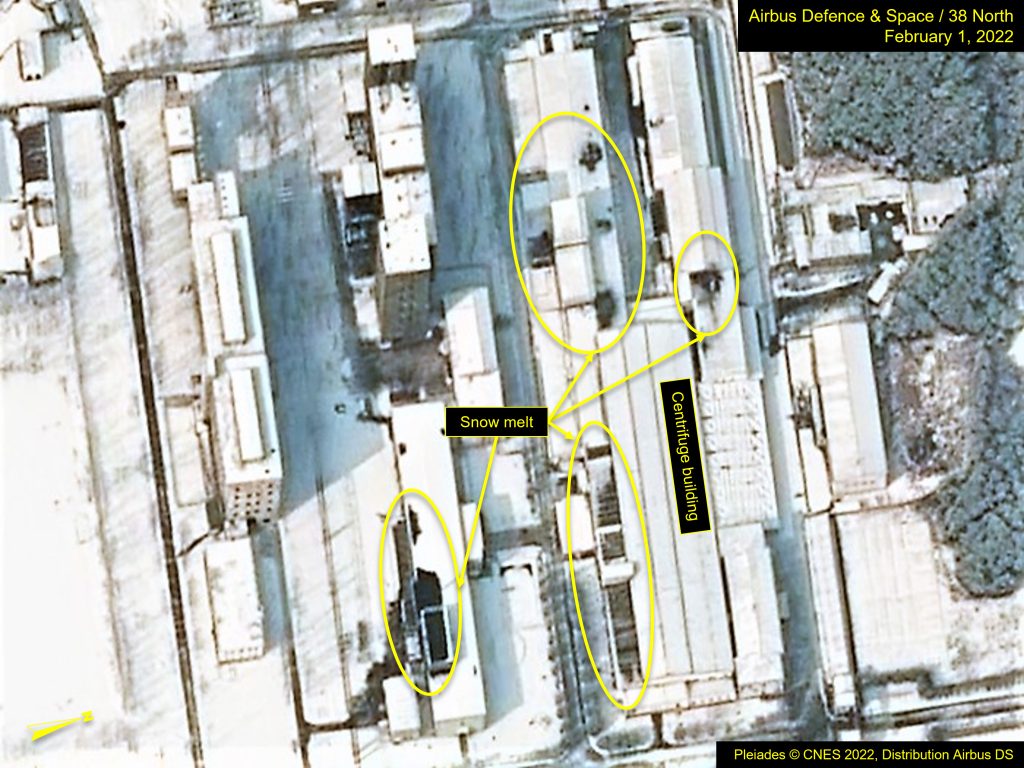
Radiochemical Laboratory (Reprocessing Plant)
There is minimal activity at the Radiochemical Plant, with only one small building associated with chemical processing, showing snow melt. All other building roofs remain snow covered, suggesting little apparent activity within.
Figure 3. Overview of the Radiochemical Laboratory with minor snow melt visible.
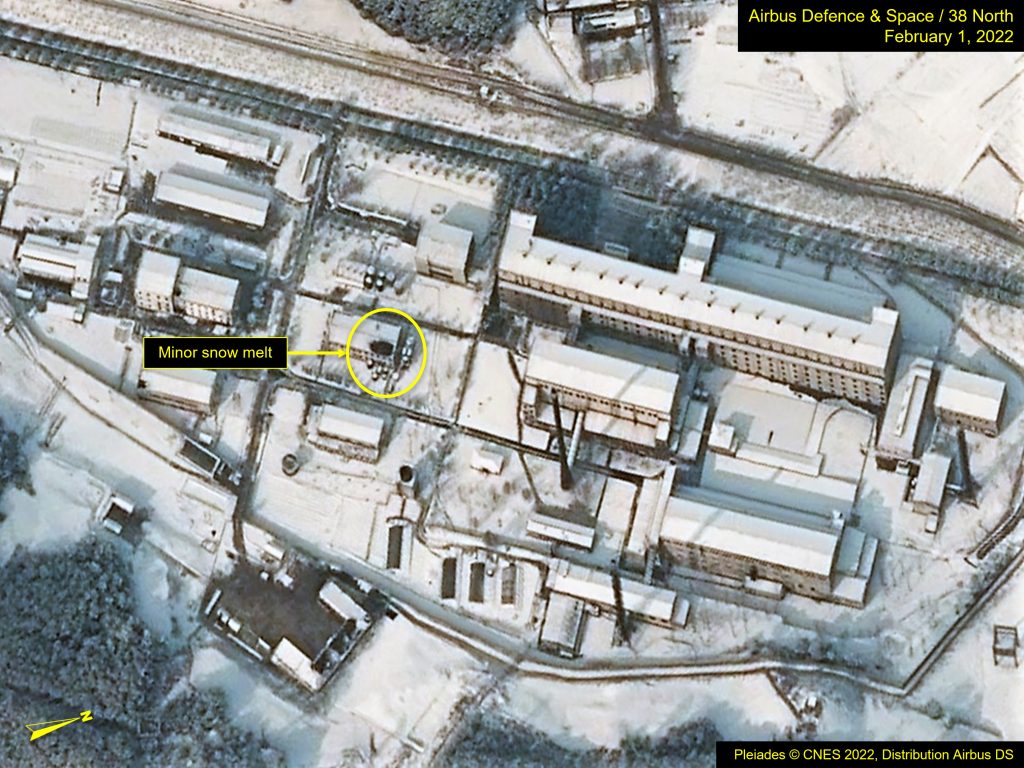
Main Research and Administrative Headquarters Area
At the Main Research and Administrative Headquarters Area, there are two key facilities: the Institute of Radiochemistry and the Institute for Nuclear Electronics and Automatization. On February 1, the former showed snow melt along the ridge line of two the laboratory buildings, indicating activity is taking place therein.
While there is no snow melt at the Institute for Nuclear Electronics and Automatization, it does not necessarily mean the building is not in use. Rather, if there is activity taking place inside, it does not emit enough heat to cause snow to melt. Of note, this institute has some type of underground storage—likely for liquids—which appears as a raised earthen square at the east end of the facility. The square is dark in the image, absent of snow, suggesting its stored contents are warmer than the surrounding grounds.
Figure 4. Overview of the Main Research and Administrative Headquarters Area with minor snow melt visible.
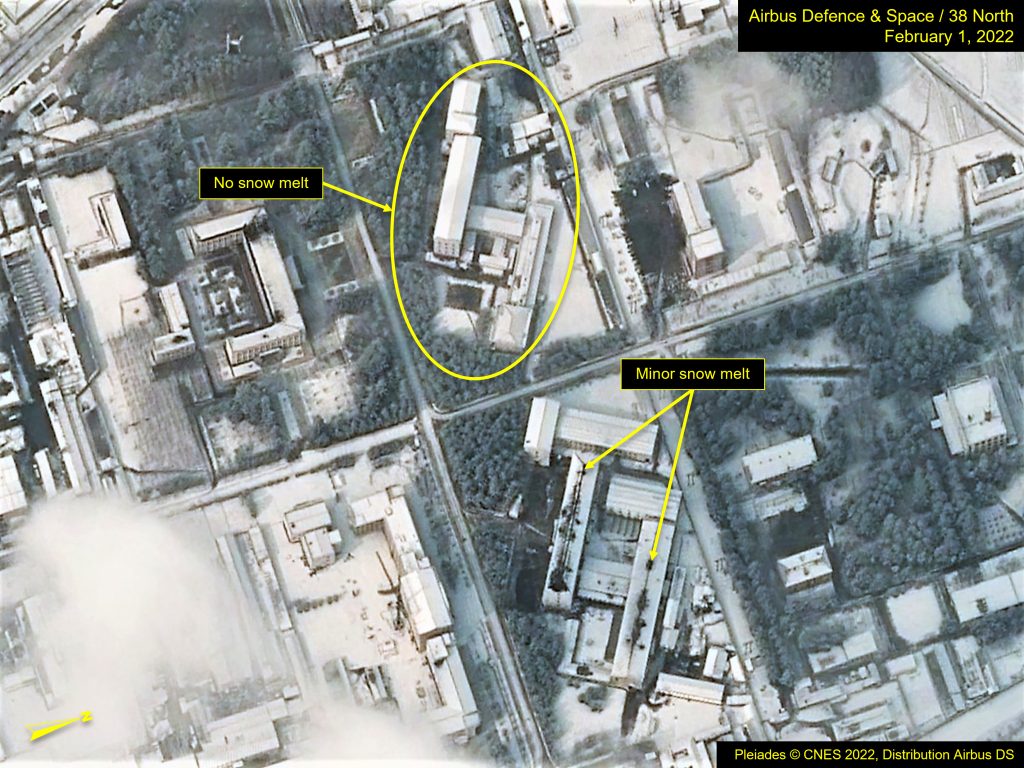
50 MWe Reactor Complex
At the never-completed 50 MWe Reactor site, new construction began in early 2021 at the west end of the complex, but was apparently halted over the winter months. On February 1, the roofs of two of the administrative/engineering buildings were entirely devoid of snow. Another support building also showed signs of snow melt, although it is more difficult to discern due to its different roofing material. The nature of this activity and the purpose of the construction in this area is still unclear.
Figure 5. Overview of 50 MWe Reactor complex with snow melt visible.
